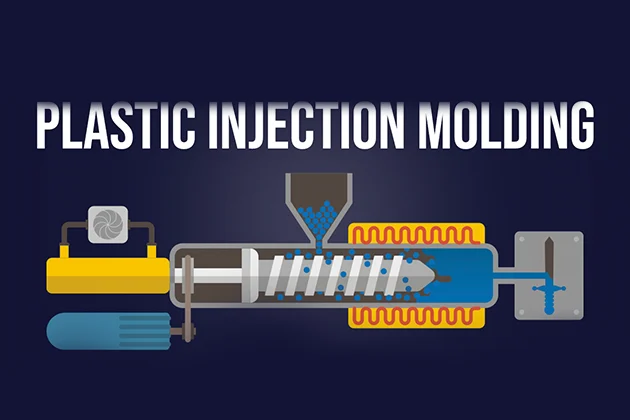Plastic gears are moving towards larger size, more complex geometry, and higher strength. With high-performance resins and long glass fiber-filled composites are also playing an important role in advancing this state of plastics in gears.
Plastic gears have gone from a new material to an essential industrial material over the past 50 years. Today, they are used in almost every application, from automobiles to watches, sewing machines, structural control facilities, missiles, and more, where they are used to transmit torque and motion. In addition to existing applications, more difficult-to-process gear applications continue to emerge, and the trend is still developing.
This successful transformation is encouraging because the automotive industry has become one of the fastest-growing areas for plastic gears. Automakers are looking for various auxiliary systems for automotive drives that require motors and gears instead of power, hydraulics, or cables. The widespread use of plastic gears in many applications, such as lifting doors, seats, tracking headlights, brake actuators, electronic throttle sections, and turbo modulation devices, has been made possible by this change.
Large, High-Strength Plastic Gears
One of the main reasons plastic gears have been developed is the advantages of plastic gear molding and its ability to mold larger, more precise, high-strength features.
There are many challenges in designing a gear configuration that maximizes power transmission while minimizing transmission errors and noise. It needs high precision in processing the gear’s concentricity, tooth profile, and other features.
Some helical gears may need complex molding actions to make the final product, while other gears may need the use of core teeth in thicker parts to minimize shrinkage. Although many molding experts are using the latest polymer materials, equipment, and processing technologies to produce next-generation plastic gears, the real challenge for all processors is to work on manufacturing such a highly precise product.
Challenges in Control
Generally, tolerances for high-precision gears are difficult to describe as “good” according to the Society of the Plastics Industry (SPI) specifications. Today, most molding experts use the latest molding machines with processing control units to precisely control the molding temperatures, injection pressures, and other variables in a complex window to mold precision gears.
In addition to specialized inspection equipment, manufacturers of precision gears must also use rolling detectors to control gear quality and computer-controlled detectors to assess tooth surfaces and other features. Yet you only have the beginning with the right equipment.
To enter the precision gear industry, molders must also change their molding environment so that the gears molded in every injection molding and every cavity are as consistent as possible. Since the actions of technicians are the decisive factor in the production of precision gears, they need to train the employees and control operational processes.
Important Molding Cooling Steps
General molding processes do not require the same level of attention to detail and measurement techniques to achieve the same precision measurement levels needed for the processing of high-precision parts. In order for the molding temperature and cooling rate to be the same in every cavity, the equipment must. The most common problems in precision gear processing are in the handling of the cooling of gear symmetry and the consistency between mold cavities.
Typically, the precision gear molds have no more than four cavities. As first-generation molds only produce one gear, there is often little specific guidance and tooth inserts are used to reduce secondary cutting costs.
Gears should be injected from a gate at the gear’s center position. Weld lines form multiple gates that change pressure distribution and shrinkage and affect gear tolerances. For glass fiber-reinforced materials, fibers are radially arranged along the weld line, and multiple gates may cause eccentric “collisions” at the radius.
Good equipment, molding design, material stretching capability and processing conditions are required for a molding expert to control the deformation at the gear tooth slots to obtain a controllable, consistent, and uniform shrinkage product. The molding surface temperature, the injection pressure, and the cooling process have to be controlled precisely.
Other factors are wall thickness, gate size and position, filler types, amounts and orientations, flow rate, and internal molding stress.
There are straight gears, cylindrical worm gears, and helical gears, and almost all metal gears can be made from plastic. Segmented cavities are commonly used to mold gears. The gear or tooth-forming gear ring must rotate during injection, and the detail must be paid attention to when processing helical gears.
New Processes and New Resins
Plastic gear molding methods are becoming more advanced. For instance, the secondary injection molding of an elastomer between the shaft and the gear tooth prevents vibrations when the gear abruptly comes to a stop and softens the sound of the gear.
Materials that are more flexible or more valuable, can be remolded with the gear shaft, as well as self-lubricating composites. In addition, gas-assisted molding and injection compression molding are being studied for improving tooth quality, overall gear precision and reducing internal stress.
A series of engineering thermoplastics now allows processing personnel to have more options in precision gear manufacturing than ever before. Gears can be produced from common materials such as acetal, PBT and polyamide that have excellent fatigue resistance, wear resistance, smoothness, and high tensile strength to withstand vibration loads from reciprocating motors.
Molding crystalline polymers at sufficiently high temperatures is necessary to achieve complete crystallization of the material. In the case of a material that is not fully crystallized, gear dimensional changes due to secondary crystallization above the molding temperature may occur during use.
For more than 40 years, acetal, a key gear manufacturing material, has been used in automobiles, appliances, office equipment, and other areas. It has good dimensional stability and high resistance to fatigue and chemicals; it can withstand temperatures as high as 90°C. It has excellent lubricating properties compared to metals and other plastics.
Smooth surfaces can also be produced by PBT polyester. Its maximum operating temperature without fillers can be up to 150°C, and glass fiber-reinforced products can operate up to 170°C. It works well compared to other plastics and metals and is often used in gear structures.
Polyamide materials are tough and durable, and therefore suitable for turbine drives and gear frames, compared to other plastics and metals. Polyamide gears can be used up to 150°C and glass fiber reinforced ones up to 175°C. But polyamide absorbs moisture or lubricants, causing dimensional change, and is not suited to precision gears.
Polyphenylene sulfide (PPS) has high hardness, dimensional stability, fatigue resistance and chemical resistance to 200°C. With its applications increasingly moving into harsh working conditions, automotive industries, and other end-use fields, it has become increasingly important.
Precision gears made of LCP (liquid crystal polymer) have good dimensional stability. They are capable of withstanding temperatures of 220°C and have high chemical resistance and low molding shrinkage. The gears made with this material have already been able to have a tooth thickness of about 0.066 mm, about 2/3 the diameter of a human hair.
When it is manufactured into gear teeth, a thermoplastic elastomer can make gears quieter and more flexible, better able to absorb shock loads. Thermoplastic elastomers based on copolyesters can make low-power, high-speed gears that provide sufficient dimensional stability and hardness with some tolerance during operation to reduce noise. An application example is the gears used in curtain operators.
Polycarbonate is a poor lubricant, and lacks chemical resistance, and fatigue resistance. ABS and LDPE materials do not normally meet the requirements for precision gears in terms of lubrication, fatigue, dimensional stability, heat resistance and creep resistance. Most of these polymers are used for conventional, low-load, or low-speed gear applications.
Advantages of Using Plastic Gears
Metal gears are better than plastic gears of the same size in terms of dimensional stability when temperature and humidity fluctuate. However, plastic materials are much cheaper than metal materials, and have better design, processing, and performance.
Plastic molding has inherent design freedom that makes it more efficient in manufacturing gears than metal molding. Plastic can be molded into internal gears, gear sets, worm gears, and other products at a reasonable price that is difficult to achieve with metal materials.
Another important material to meet the requirements of low noise operation is plastic gears, and the plastic gears need to have high precision, new gear shapes, and good lubrication or flexibility.
The cost of gears made of plastic is reduced by 50% to 90% compared to stamped and machined metal gears, because they are not usually subjected to secondary processing. Plastic gears better than metal gears, which are lighter and more inert and can be used in environments with prospects metal gears may corrode or degrade, for example, in chemical equipment controls or in water meters.
Plastic gears are less rigid than metal gears and can deform to absorb the shock loads and better dissipate the local load variations originating from the shaft misalignment and the tooth errors.
Reinforcement Effects of Materials
The important role of fibers and fillers on the performance of resin materials should be considered in the description of gears and structural materials. For instance, adding 25% of short glass fibers (2mm or smaller) to an acetal copolymer increases its tensile strength two times at high temperatures, and its hardness increases three times.
Fillers can be used to improve strength, creep resistance, dimensional stability, toughness, hardness, wear performance and other properties with long glass fibers (10mm or smaller). Long glass fiber reinforced materials are an attractive alternative for large-size gears and structural applications due to the fact that they offer the required hardness and good controllable thermal expansion properties.










